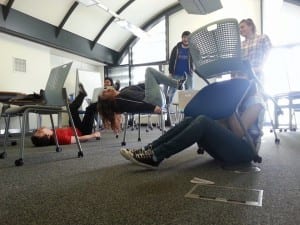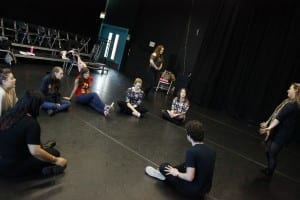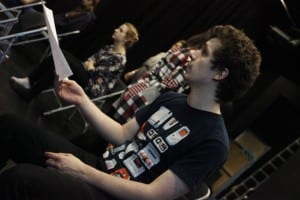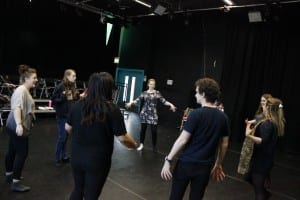Physicality has been a part of theatre from the beginning of theatre however; the manner in which physicality presents itself differs. Scholars Simon Murray and John Keefe states “one can trace an insistence on practise of embodiment, physical expressiveness and corporeal fluency” (Keefe and Murray, 2007, 17). It is suggested that physicality has been and still is connected to theatre and the technique of physicality has been developed and implemented by many pioneering practitioners.
It could be suggested the term Physical Theatre has evolved its meaning in recent years, where it once represented a genre where theatre and dance meet to create visually beautiful performances, now is being used to describe performances to seem less dull. Keefe and Murray further explain this phenomenon, “today it is often to be found as a strap line to identify the direct and aspiration of many young companies determined to resist the embrace of mainstream realism and naturalism” (Keefe and Murray, 2007, 16). The term has morphed into a ‘buzz word’ for companies to suggest to potential audiences the performance is not traditional theatre, it is to remove themselves from the image of naturalistic theatre. The term is to suggest a performance will be “fresh, cutting edge and risky” (Keefe and Murray, 2007, 13).
The creators of the theatre company Goat Island had released a letter that is addressed to young and upcoming practitioners, it explained that bodies “are both art elements and tools that communicate intuitively” (Goat Island, 2007). The body is a tool and a tool that is able to assist the voice of an actor and ensemble in providing the audience with a true portrayal of a character and help the overall narrative of a performance. Keefe and Murray agree with having the verbal and the physical work hand in hand and suggest “the actor whose abilities are restricted to a glorious vocal range on an unimpressively lifeless body is easy” (Keefe and Murray, 2007, 14).
The vocalisation of a character’s emotion through the voice is capable by most actors, but to illustrate through the voice and body is demonstrating the actor’s capabilities as well as assist in the characterisation. The body is still able to present the emotions of character if the voice were to be taken. Physical Theatre is a complex genre and must understand the capabilities for a performance and this is what I as choreographer must understand.
Mia
Work cited:
Keefe, J and Murray, S (2007) Physical Theatres: A Critical Introduction. London: Routledge.
Goulash, M and Hixon, L. (2007) http://www.goatislandperformance.org/writing_L2YP.htm




